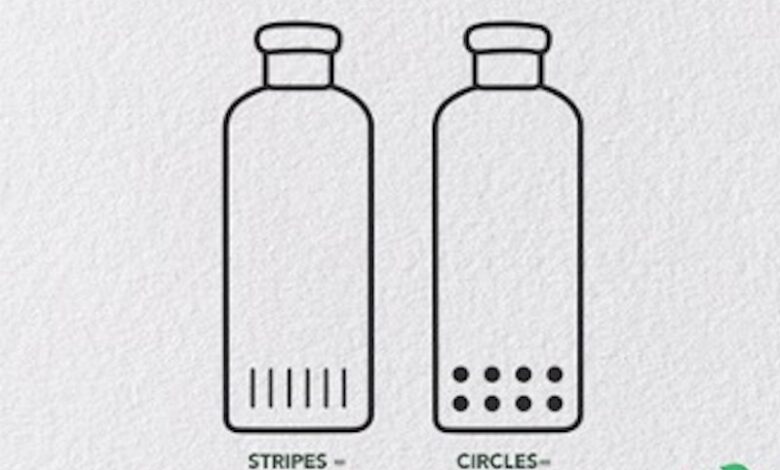
What is universal design and how will it benefit disabled people?
Inclusivity is so important for everybody and can be found among the simplest of things and places. Universal design is still a fairly new term, in which a brand or organisation creates a product or service that can benefit all people, no matter their ability or background.
Disability and beauty blogger Emily Davison, who runs the blog Fashioneyesta, shares a recent blog post about what universal design is, how it differs from accessible design and how it will benefit disabled people.
As a disabled beauty and style blogger, I’m always advocating for inclusivity within both the fashion and beauty industry for my community.
View this post on Instagram
Lately, I’ve been writing a lot of journalistic pieces and giving interviews where I’ve spoken about the concept of “universal design”.
Universal design is growing in popularity, with more brands creating packaged goods adopting universal design techniques to make their products widely accessible.
But, a lot of people I’ve spoken to aren’t familiar with this term and don’t know what it means.
So today I’m going to be breaking it down and sharing everything you need to know about universal design.
The difference between accessible design and universal design
When we talk about disability inclusivity there are two terms you will hear – one is accessible design and the other is universal design.
Let’s start with what accessible design is for anyone who isn’t quite sure.
Accessible design is about adapting a product specifically to meet the needs of a certain group of people, particularly disabled people.
This could be anything from adding hearing loops in shops for hearing aid users or adding tactile markers on steps for blind and visually impaired people.
Universal design is the designing of something with the overall goal to make something usable for as many people as possible.
The major difference between universal design and accessible design is whom it benefits. Accessible design tends to fit a niche few, whereas universal design fits a wider majority.
Examples of universal designed products
An example of universal design would be making a building doorway large enough for people with various wheelchairs, mobility aids and pushchairs to fit through.
Another example would be a product that includes braille for people with sight loss. Let’s say a haircare brand wanted to add braille to its shampoo and conditioner bottles for blind people to tell them apart.
However, only 10% of the sight loss community read braille. So, this wouldn’t be accessible to all of us.
Whereas, with universal design, a product could be made with tactile symbols to tell different bottles apart. This would be more widely accessible because anyone could learn to memorise this symbol without having to know braille.
One brand that has done just that is haircare brand Herbal Essences, which included raised stripes on its shampoo bottles and raised circles on its conditioner bottles to improve accessibility for its customers with low vision.
Ultimately accessible design aims to be specific and targeted. Whereas universal design seeks to be broader.
Is accessible design or universal design better?
View this post on Instagram
This is subjective, but ultimately both have their benefits. There will always be people with specific needs that only accessible design can accommodate.
In fashion particularly, accessible design is probably more of a needed approach when it comes to people with disabilities that impact their physical anatomy. Regular high street clothes may not fit their unique needs and so that’s where the accessible design will play a big part in their lives.
But there are certain spaces, particularly where product design is concerned, in which the concept of universal design is arising more and more into the conversation.
Ultimately the more widely inclusive a product is, the better. This is why universal design is growing increasingly in popularity because it can accommodate a lot of people as opposed to a select few.
It’s also a very desirable concept for a lot of brands. If they can implement simple, cost-effective methods to improve access that would benefit the widest proportion of people, it is probably going to tip the scale for businesses.
See our adaptive clothing range on the Disability Horizons Shop to find stylish and practical clothes to suit your needs.
Does universal design benefit anyone else?
Universal design doesn’t just benefit disabled people, it benefits so many other people from different backgrounds.
Let’s take the tactile symbol example again. Using a tactile symbol instead of braille would mean that people who speak a different language or who have dyslexia would also be able to benefit from a feature like this.
There will always be a place for accessible design because there will always be people with specific needs, body types and abilities that will be chiefly met by the accessible design.
But there is a growing space in the industries I advocate for more products that are created with universal design in mind.
Universal Design Awards 2022
This year, PAC Global launched its Universal Design Awards, which is the first year running and it saw brands both big and small taking part. One winner was Victoria Watts (founder of VictoriaLand Beauty) for her innovative tactile symbol system.
View this post on Instagram
The growth of universal design
Universal design is a growing enterprise and it will continue to grow as more brands begin to implement this into its design strategies.
In short, universal design is here to stay and as a disabled person, I couldn’t be happier about it.
By Emily Davison
Find out more about Emily by visiting her blog and following her on Facebook, Twitter, Instagram and YouTube.
More on Disability Horizons…